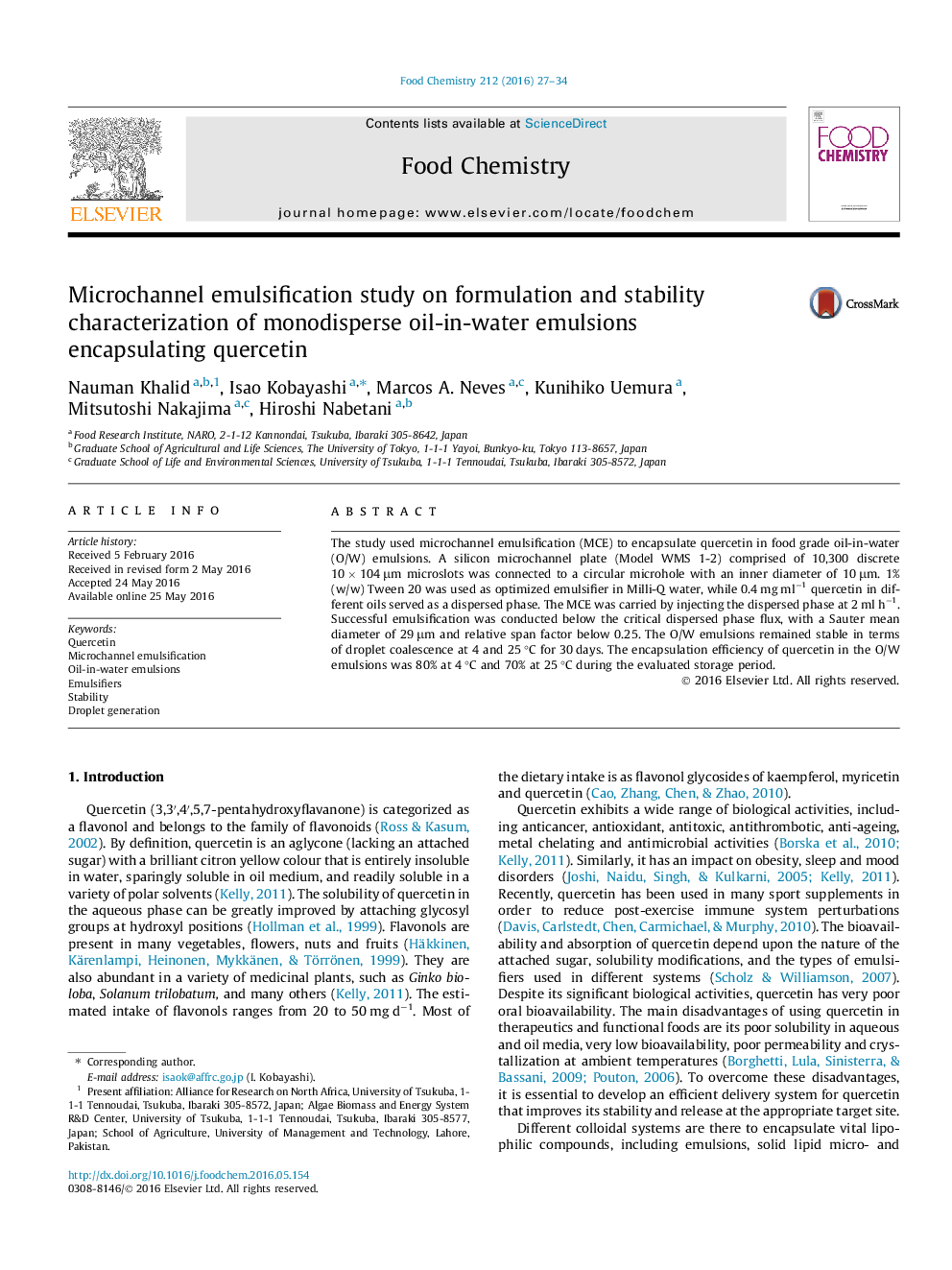| کد مقاله | کد نشریه | سال انتشار | مقاله انگلیسی | نسخه تمام متن |
|---|---|---|---|---|
| 1185023 | 1492080 | 2016 | 8 صفحه PDF | دانلود رایگان |

• Monodisperse O/W emulsions encapsulating quercetin were formulated.
• Uniformly sized droplets with d3,2 of 28–29 μm were generated by MCE.
• Appropriate emulsion compositions and operating conditions for MCE were found.
• The collected O/W emulsions had high coalescence stability at 4 and 25 °C.
• Encapsulation efficiency of quercetin was about 80% after 30 d of storage at 4 °C.
The study used microchannel emulsification (MCE) to encapsulate quercetin in food grade oil-in-water (O/W) emulsions. A silicon microchannel plate (Model WMS 1-2) comprised of 10,300 discrete 10 × 104 μm microslots was connected to a circular microhole with an inner diameter of 10 μm. 1% (w/w) Tween 20 was used as optimized emulsifier in Milli-Q water, while 0.4 mg ml−1 quercetin in different oils served as a dispersed phase. The MCE was carried by injecting the dispersed phase at 2 ml h−1. Successful emulsification was conducted below the critical dispersed phase flux, with a Sauter mean diameter of 29 μm and relative span factor below 0.25. The O/W emulsions remained stable in terms of droplet coalescence at 4 and 25 °C for 30 days. The encapsulation efficiency of quercetin in the O/W emulsions was 80% at 4 °C and 70% at 25 °C during the evaluated storage period.
Figure optionsDownload as PowerPoint slide
Journal: Food Chemistry - Volume 212, 1 December 2016, Pages 27–34